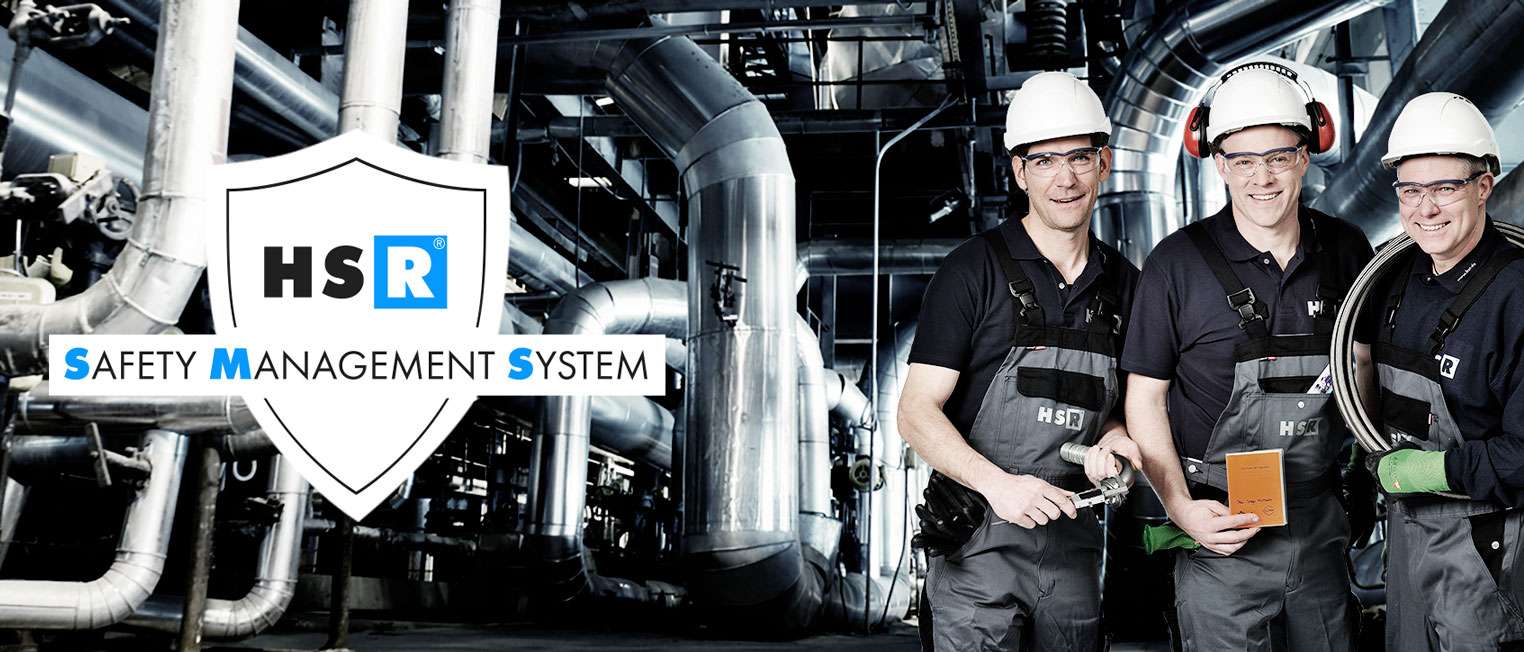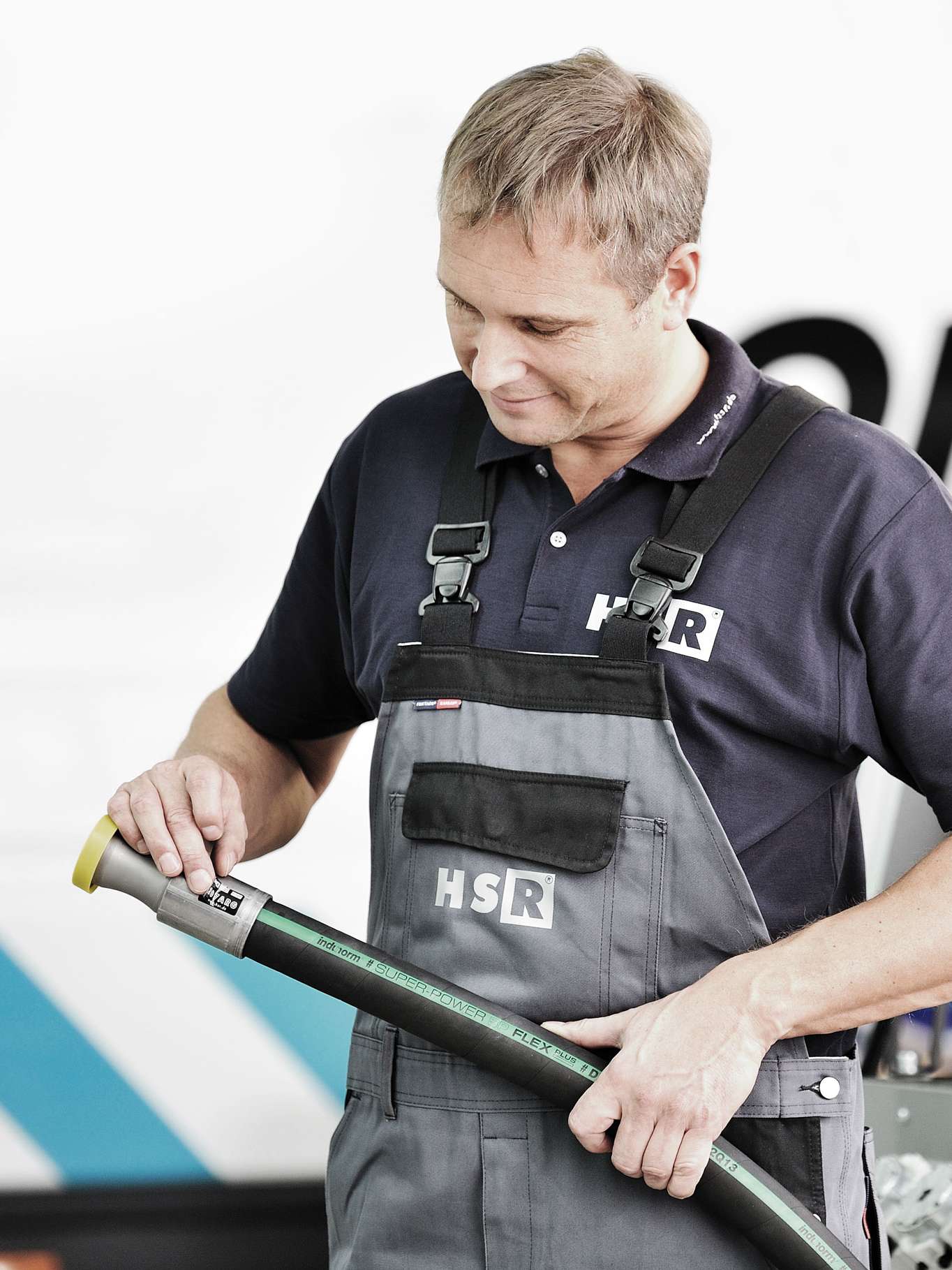With our HSR Safety Management System, we provide you, as an operator, with proactive support in terms ensuring preventive maintenance for your systems. Thanks to our innovative hose management service, you can minimise downtime, comply with the statutory health and safety measures at the same time and you will be in a position to create long-term cost and budget plans.
Hose management provides support to ensure compliance with statutory requirements
As an operator of hydraulic systems, you are obliged to comply with certain laws and regulations. If people are injured, you may be held liable for this. In addition to the Constitution of the Federal Republic of Germany (Grundgesetz), which states that every person has the right to life and physical integrity, in the field of hydraulics, the Health and Safety at Work Regulations (Betriebssicherheitsverordnung) and the “DGUV 113-020” guideline by the German Statutory Accident Insurance Association (Deutsche Gesetzliche Unfallversicherung) are particularly important for you.
It is stipulated therein that you must carry out a regular risk assessment for each system. The hydraulic hose lines built into each system must also be assessed by you and/or a “qualified person in the field of hydraulic connection technology” in terms of the level of risk with which they are associated.
Hose management with a system
This is where our Safety Management System comes into the picture. Our employees, who have received excellent training, provide you with expert and knowledgeable support in assessing the level of risk associated with each individual hydraulic hose line. With our help, you will have a professional testing and replacement plan at the end, which takes the DGUV recommendations into account.
This means you can quickly see which lines need to be replaced at which times, mark these with labels in various colours, which can be adapted however you wish to meet your requirements, even as early as during the risk assessment stage. And the best bit is that, since your hose lines are saved in our database, including your own inventory numbers, we will automatically remind you when a hose line is nearing the end of its service life and needs to be replaced. And, since we have already saved all the information about the hose that is in use, we can produce a new version of the defective hose line in next to no time.
Visual inspection of hose lines within the framework of the risk assessment
If you carry out a risk assessment in collaboration with us, we can also conduct a visual inspection of the system at the same time. This saves time because, during the visual inspection, we also document the condition of each individual hose line as well as the level of risk and mark both defective and good hose lines in different colours in order to distinguish them from one another.
We create a test schedule, which serves as legal proof, and provide a recommendation as to which hose lines need to be replaced. If you wish, we can also replace any defective hose lines directly after this. At the end of the visual inspection, we affix a testing label that states the year in a clearly visible location on your system.

